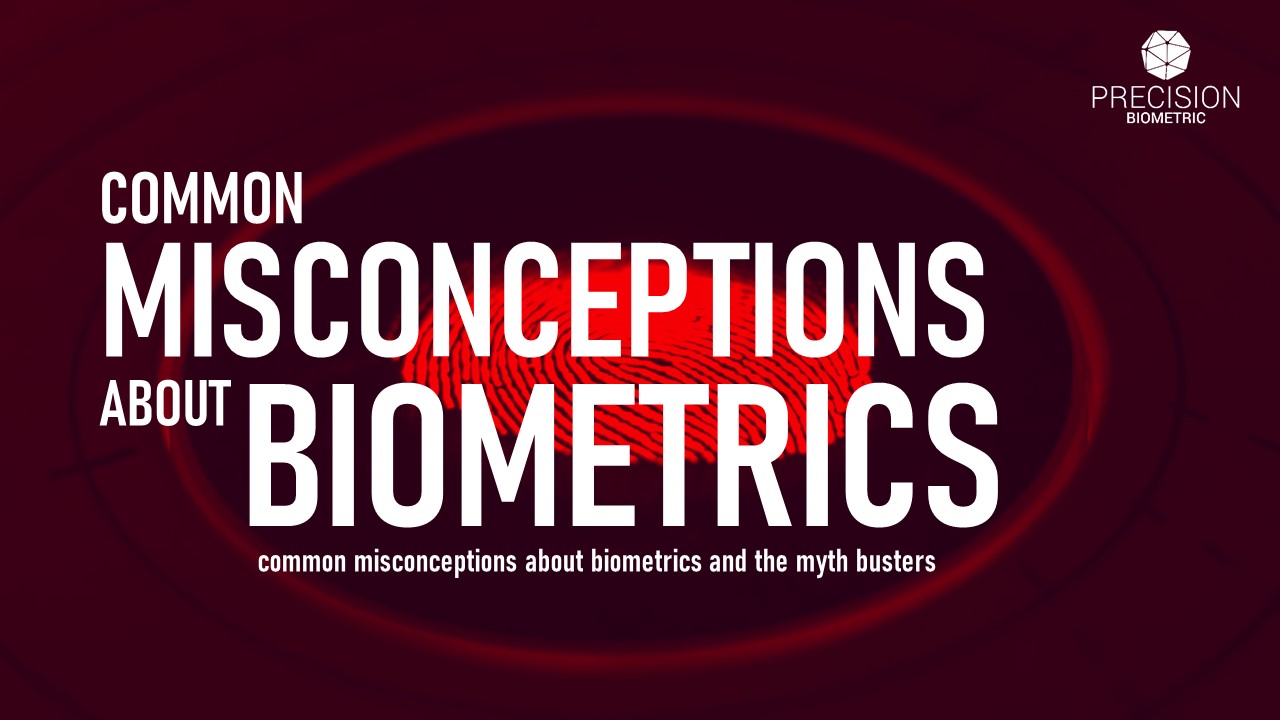COMMON MISCONCEPTIONS ABOUT BIOMETRICS
The biometrics industry has made great strides in the last few years. Fingerprint authentication has replaced PINs and passwords as the most popular way to authenticate.
The evolution in Enterprise Biometrics in the last two decades has been phenomenal. And today’s solutions are far more advanced and safer than many may think.
Here are some common misconceptions about biometrics and the myth busters:
Misconception: Biometric data is stored as images in easy-to-hack databases.
A leading myth about biometrics is that when a fingerprint is registered on a device, it is stored as an image of the actual fingerprint. This image can then be stolen and used across applications. In reality, the biometric data is stored as a template in binary code – put simply, encrypted 0s and 1s. Storing a mathematical representation rather than an image makes hacking considerably more challenging.
Misconception: Fingerprints can be easily replicated.
Despite what we see in Mission Impossible or similar action movies, biometrics are actually quite difficult to replicate. Gangsters cutting off enemies’ fingers to access secret locations and spies lifting fingerprints from martini glasses – the imagination of the entertainment world has been running wild ever since biometrics entered the scene.
Misconception: Physical change will prohibit access
Although our irises don’t change as we age, our fingerprints can and our faces will. Does that mean we have to update our biometric devices every few months to capture these changes? Not quite! Unless there are drastic, sudden changes, the ‘self-learning’ algorithms in modern-day biometric systems are able to keep up with our developing looks.
Misconception: Biometric data is unreliable and error rates are high
Sceptics may question the reliability of biometric technology, but evidence shows it’s far superior to outdated methods such as password authentication.
Password verification accounts for more than 80 per cent of cyber breaches, according to a recent Verizon report. Biometric technology on the other hand boasts much better security performance and high accuracy levels.
Decades of technological advancement mean fingerprinting has accuracy of more than 99 per cent, according to a study by the National Institute of Standards and Technology (NIST).
By moving away from measures based on what you know, which can be phished and stolen, and instead pairing these with innovative biometrics, such as the way a user interacts with their device, organisations can strengthen security in a way that is frictionless, reliable and transparent
Misconception: Biometrics are expensive and aren’t cost effective in the long run
Advances in technology mean the cost of biometrics is falling all the time. As a result of what’s commonly known as “password fatigue”, many users are regularly resetting passwords and calling IT helpdesks. Veridium estimates that businesses with 10,000 employees spend around $1.9 million annually on password resets. So, swapping or enhancing traditional password authentication with biometric data can also mean big cost-savings for businesses.
According to a report, the Indian Government saved ₹ 90,000 crore until March 2018 by eliminating duplicate, non-existent and fake beneficiaries through Aadhaar, one of the largest Biometric Identity Programs in the world
According to a report by the UK’s Department for International Development, when Nigeria launched its e-ID system it made an annual saving of $1 billion through exposing 62,000 so-called ghost workers in the public sector
Misconception: Biometrics take longer to process than other forms of authentication
Typing in a password or getting a two-factor authentication code from an application, SMS or hardware key is substantially more time consuming than using a fingerprint.
The big premium is on gaining biometrics, powerful anti-fraud data, without adding friction to the user experience, because new security measures shouldn’t be too cumbersome to use.












